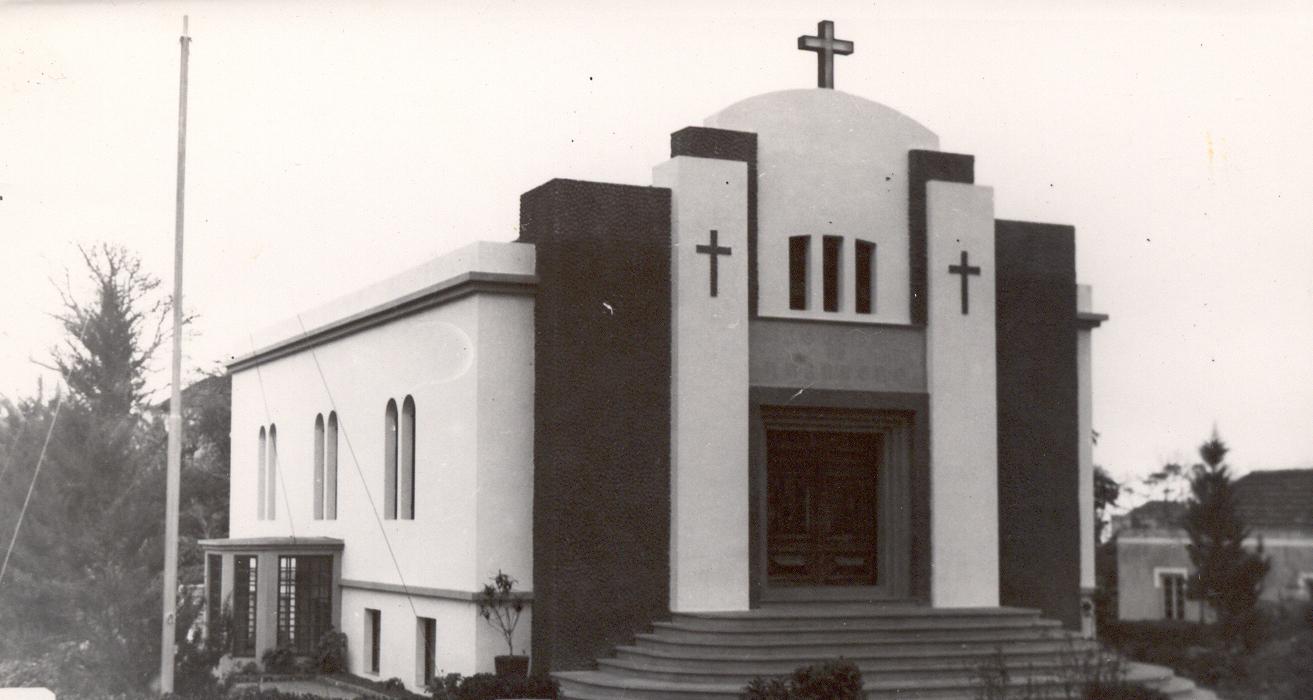
Cabo Verde church becomes historic landmark

During the 30th General Assembly and Conventions of the Church of the Nazarene, six resolutions were adopted recognizing various locations as historical landmarks in accordance with Manual paragraph 913. This is the sixth article in a series highlighting the significance of these six new historic landmarks of the Church of the Nazarene.
The João José Dias Church, also known as Chapel of Ponta Achada, located on Brava Island, Cabo Verde, was designated a historic landmark of the Church of the Nazarene by action of the 30th General Assembly in Indianapolis, Indiana, USA, in June. The designation came after the General Assembly adopted Special Resolution 758, a resolution originating from the Cabo Verde North and South districts on the Africa Region.
The building is at Ponta Achada on Brava Island, one of Cabo Verde’s 10 islands. It was built in 1909 under the leadership of João José Dias (1873–1964), a native of Cabo Verde who immigrated to the USA in 1889 with his father at the age of 16. Dias initially settled with the Cabo Verdean community in New Bedford, Massachusetts, USA.
Two years later, he moved to Providence, Rhode Island, USA, where he testified to his faith in Christ and joined the People’s Evangelical Church (later known as Providence First Church of the Nazarene). This local congregation was the earliest member of the Central Evangelical Holiness Association, the oldest organized parent body of the present-day Church of the Nazarene.
The People’s Evangelical Church is the oldest local church brought into the Church of the Nazarene at the General Assembly in Pilot Point, Texas, USA, in 1908. It was at the People’s Evangelical Church that Dias experienced the grace of entire sanctification.
By 1900, with the promised support of the People’s Evangelical Church, Dias returned to Cabo Verde as a missionary to his homeland. In February 1901, Dias and a few companions sailed for Brava Island, his home island. Dias began his work there, which included organizing churches, starting and operating a school, preaching the message of holiness, and suffering intense persecution. He was jailed four times. On two occasions, he narrowly escaped death after being mobbed and beaten.
Other Cabo Verdeans under his ministry were also persecuted. Through it all, their efforts and resolve eventually led to the construction of the historic building that now bears Dias’ name. In addition to the building, a street in Nova Sintra, the capital city of Brava Island, is also named after Dias.
The João José Dias Church stands as the Church of the Nazarene’s oldest building in Africa. It was frequently damaged during the years of persecution. As the Nazarene congregation increased numerically, a larger and newer facility was needed to accommodate its growth. However, the congregation's attachment to the original building remained strong. To honor this, the original wood flooring of the João José Dias Church was removed and repurposed into an altar for use in the new building.
In subsequent years up to the present day, the João José Dias Church has continued to be used as a church building, school, youth ministry hall, and museum. The Cabo Verde South District owns a volleyball court adjacent to the building that is used regularly for outreach to youth.
In 2021, the Church of the Nazarene in Cabo Verde celebrated its 120th anniversary.
Related: Primera Iglesia Mexicana del Nazareno becomes historical landmark
Related: Instituto Biblico Nazareno celebrates 100 years, honored as historical landmark
Related: Camp Garner Creek recognized as historical landmark
Related: Fitkins Memorial Chapel granted historical landmark status
Related: Cambridge, Massachusetts First Church of the Nazarene becomes historical landmark
